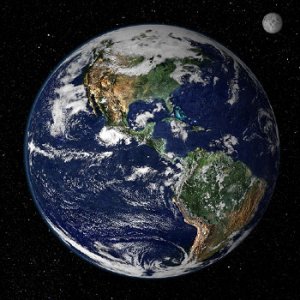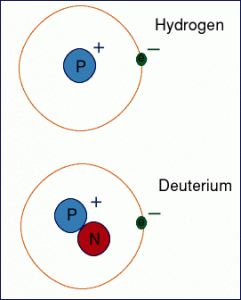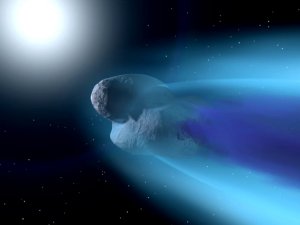Creation: Good Old Young Universe Part I

A guest post today from my brilliant husband, Gregg.
The 6 types of evolution taught as fact in the average public school today, the first 5 being types of Darwinian evolution which are preached as religious beliefs, and the 6th being simple modifications within kind, or changes within kind, and not even really “evolution” are:
- Cosmic evolution
- Stellar evolution
- Chemical evolution
- Abiogenesis—Life from non-life
- Macro-evolution
- Micro-evolution (Variations within kind, not really evolution)
Good Old Young Universe
How old is our planet, the Earth? Believe it or not, this is an important question. It is a question that, when answered, will immediately reveal to you whether the person you ask can distinguish between facts and opinions. For example, a died in the wool creationist might answer, the earth is no more than 6,000 to 10,000 years. A Darwinist would answer that the earth is no less than 4.2 billion years.
Did you know that there are no known reliable methods for scientifically dating objects? I can’t chase that rabbit here. That is a post or a series of posts for another Sunday.
 As to the age of our planet, the fact is that NO ONE knows how old or how young the planet is. No one knows. That is a fact. If I were to produce a shovel of dirt from anywhere on the planet — to include from the ocean’s depths — there is absolutely no one living or dead, who can tell me within 300,000 years how old that shovel of dirt really is. That is a pretty gigantic margin of error.
As to the age of our planet, the fact is that NO ONE knows how old or how young the planet is. No one knows. That is a fact. If I were to produce a shovel of dirt from anywhere on the planet — to include from the ocean’s depths — there is absolutely no one living or dead, who can tell me within 300,000 years how old that shovel of dirt really is. That is a pretty gigantic margin of error.
Darwinists used to claim that earth and the universe were infinite and eternal. This allowed them the wiggle room of infinite possibility. Real science keeps limiting their timeline, though. As we have already covered, even vast amounts of time don’t allow for the logical or mathematical possibility that Darwinian evolution could take place.
Vast amounts of time don’t prove Darwinism. However, the converse does not follow. Short amounts of time, young ages, directly refute Darwinism. This is why Darwinists have worked so hard over the last half century to make anyone who believes earth and the universe to be, in fact, rather young look like a quack, a nut, or someone with an agenda.
Whether Darwinist tar me as a quack is pretty far outside of my concern. What I will do is present some facts about the age of the earth and the universe in which we exist. While opinions can vary pretty vastly, the fact is that there are many evidences that our world is quite young.
Consider Evidence from the Stars
STAR CLUSTERS: There are many star clusters in the universe. Each one is a circular ball composed of billions upon billions and sometimes even over a trillion stars, each with its own orbit. It can be scientifically and mathematically shown that some of these clusters of stars are moving so rapidly, moving together, moving in certain directions, that it should be impossible for them to remain together if the universe were very old.
VERY LARGE STARS: Some stars are so enormous in diameter that they could not have existed for even a few million years, otherwise their initial larger mass would have been impossibly large. These massive stars radiate energy very rapidly — some as much as 100,000 to 1 million times more rapidly than our sun. On the hydrogen fusion basis of stellar energy, they could not have contained enough hydrogen to radiate at such fast rates for long ages, because their initial mass would have had to be far too gigantic. Conversely, if solar collapse is responsible for stellar light and heat, they could not be more than a few million years old.
HIGH-ENERGY STARS: Some stars are radiating energy so intensely that they could not possibly have survived for a long period of time. This includes the very bright O and B class stars, the Wolf-Rayfert stars, and the P Cygni stars. These stars emit radiation levels 100,000 to 1 million times greater than our own sun, yet by the standard solar energy theory (hydrogen fusion theory), they do not contain enough hydrogen to perpetuate atomic fusion longer than approximately 50,000 to 300,000 years at most. Conversely, if solar collapse is responsible for stellar light and heat, they could not be more than a few million years old.
BINARY STARS: Many stars in the sky, in fact most stars in the universe, are binaries: that is, two stars circling one another. Binary systems point to a young age for the universe, because they consist of theoretically “young” and “old” stars circling one another.
 HYDROGEN IN THE UNIVERSE: According to the hydrogen fusion theory of solar energy, hydrogen is constantly being converted into helium as stars shine. But hydrogen cannot be made by converting other elements into it. Astronomers maintain that if the universe were as old as Darwinists contend, there should be little hydrogen left. By now, 20 to 15 billion years into the Big Bang timeline, nearly all the hydrogen in the universe should have been transformed into helium. Yet stellar spectra reveal an abundance of hydrogen in stars which fact argues that the universe must be quite young.
HYDROGEN IN THE UNIVERSE: According to the hydrogen fusion theory of solar energy, hydrogen is constantly being converted into helium as stars shine. But hydrogen cannot be made by converting other elements into it. Astronomers maintain that if the universe were as old as Darwinists contend, there should be little hydrogen left. By now, 20 to 15 billion years into the Big Bang timeline, nearly all the hydrogen in the universe should have been transformed into helium. Yet stellar spectra reveal an abundance of hydrogen in stars which fact argues that the universe must be quite young.
All of these are facts. Each single fact represents a single limiting factor that directly refutes Darwinist theories. Each single fact would have to be accounted for in order for the theory to remain intact. Since facts cannot be accounted for, they simply are, these facts alone are sufficient to refute the entire theory. But there are many, many more facts.
Consider Evidence from Our Solar System
SOLAR COLLAPSE: Our sun is gradually shrinking at a steady rate of seconds of arc per century. At its current rate of shrinkage, as little as 50,000 years ago the sun would have been so massive that our oceans would have boiled away. But in far less time than 50,000 years, life here would have ceased to exist. Neither the size of the sun, nor the earth’s distance from it, could be very much greater or smaller in order for life to exist on our planet. Extrapolating back just 100,000 years ago, the sun would have been about twice its present size, making life impossible on earth.
SOLAR NEUTRINOS: In 1968 it was discovered that the sun is emitting hardly any neutrinos. This evidence points directly to a very youthful sun. These neutrinos ought to be radiating outward from the sun in very large amounts, but this is not occurring. This fact, coupled with the discovery that the sun is shrinking in size, point to a recently created sun.
COMETS: Comets, journeying around the sun, are assumed to have the same age as our world and solar system. The fact is, though, that no one has the first idea where or how comets originated. Yet we know that they are continually disintegrating. Comets are composed of bits of rocky debris held together by frozen gases, ice, and water.
 Each time a comet circles the sun, some of the ice is evaporated and some of the gas is boiled away by the sun’s heat. Additional material is lost through gravitational forces, tail formation, meteor stream production, and radiative forces. The most spectacular part of a comet is its tail, yet this consists of material driven away from its head by solar energy. All the tail material is lost to space as the comet moves onward.
Each time a comet circles the sun, some of the ice is evaporated and some of the gas is boiled away by the sun’s heat. Additional material is lost through gravitational forces, tail formation, meteor stream production, and radiative forces. The most spectacular part of a comet is its tail, yet this consists of material driven away from its head by solar energy. All the tail material is lost to space as the comet moves onward.
A number of comets have broken up and dissipated within the period of human observation. Some of those regularly seen in the nineteenth century have now vanished. Others have died spectacularly by plunging into the sun.
Evidently, all the comets should self-destruct within a time frame that is fairly short. The effect of this dissolution process on short-term comets would have totally dissipated all of them within 10,000 years. Yet there are numerous comets circling our sun, including many short-term comets, with no source of new comets known to exist.
COMET WATER: It has only been in recent years that scientists have discovered that comets are primarily composed of water, and that many small comets and microcomets are continually striking the earth. Each cometary strike adds more water to our planet. Evidence indicates that, if the earth were billions of years old, our oceans would be filled several times over with water from comets and microcomets.
I will end this post by discussing something called the Oort Cloud. In 1950, Dutch astronomer Jan Hendrik Oort theorized that a cloud of ice and rocks existed as the source for comets. The theoretical band of ice and asteroids surrounds our solar system a mere 50,000 AU (Astronomical Units — 1 AU being roughly the distance from the earth to the sun) or, approximately 1 light year away and allegedly decides to occasionally and randomly hurl rocks and ice at our sun.
The entire theory is merely yet another Darwinist rationalization for why young comets and asteroids keep appearing. In short, no one has ever seen the Oort Cloud. Oort never saw the Oort cloud.
Basically, Oort logically begged the question by stating that “since Darwinism is true, a source for these young comets must exist that no one can see and for which there exists no empirical evidence. I’ll name it after myself.” His hypothesis that the comets have a common origin was later proven, and in some detail, to be incorrect. This fact is widely known by astronomers, along with the fact that no direct observations or confirmation that the Oort Cloud exists have ever been made. Yet the Oort Cloud is still referred to as if it actually exists.
I find it ironic that comets actually exist. Humanity has witnessed them throughout our history. Comets also present some pretty compelling empirical evidence, evidence which is rather irrefutable. Yet the empirical irrefutable evidence comets present is handily discounted by Darwinists based on a 69 year old fantasy construction of the mind for which absolutely no empirical evidence exists and, in fact, with the Hubble telescope, a large body of evidence refutes.
This is an excellent metaphor for methodology of the perverted and reprobate Darwinist thought process. Every article of evidence that refutes their disbelief, their fanatical religious belief in secular humanism, is discounted with an invention based on a fabrication built on a fantasy.
Next Sunday, I will document additional evidence for a young earth from our solar system and the planets.
The Truth
 The truth is that no one either living or dead has ever come up with a plausible explanation for how the universe came to be, how the galaxies and stars and planets follow their orderly paths, how life on our planet even exists — without having been created. There is no sound theory in existence that leaves out the Architect.
The truth is that no one either living or dead has ever come up with a plausible explanation for how the universe came to be, how the galaxies and stars and planets follow their orderly paths, how life on our planet even exists — without having been created. There is no sound theory in existence that leaves out the Architect.
The truth is that creation is explained in perfect, logical, scientifically accurate detail for anyone who cares to investigate and the one who lays the explanation out for us is the One who is responsible for that act of creation to begin with.
In this life, it is so easy to believe in lies. Ironically, it is also remarkably easy to learn and embrace the truth.
The harder part is to teach others the truth, to share the truth, to live the truth as a beacon for those who believe the lies.
I challenge you to make a resolution this year not only to seek the truth in your daily walk, but to share the truth with someone each week who may never have heard it. Think back to when you were lost and wandering in darkness, believing one lie after another, before you came to the truth. Has your life changed for the better ever since? Wouldn’t it be wonderful to share that gift with someone else, to give an answer for the hope that is in you? To see that life transformed as yours was?
God Bless you in this new year and thank you for reading my tiny contributions here.
Happy New Year.
Gregg
Resources:
Additional Posts dealing with Creation and Darwinism

